by yaska77
It’s been an incredibly frustrating first half of the year. Evening conditions have seen cloud more often than not, and even clear days have been followed by hazy nights. But a new month is upon us and we’re eager to get our telescopes dusted off and in use again, so come back often and hopefully we’ll have had the chance to get some lovely new images for you!
Now behold yet another new month of skybound beauties to bring wonder to your evenings!
Tuesday 2nd July – Ex-planet Pluto is at Opposition in Sagittarius
Friday 5th July – Today the Earth is at Aphelion, the furthest point out in it’s orbit from the Sun (at a distance of 152 million kilometres or 94.5 million miles)

Sunday 7th July – The Moon is at Apogee today at a distance of 406,490 km (252,581 miles), the farthest point out in its orbit around the Earth
Monday 8th July – As it is a New Moon this evening tonight is a good time to observe deep sky objects (like galaxies and nebulae) that become more visible in darker skies
Tuesday 9th July – Mercury, the closest planet to the Sun, is in Superior Conjunction meaning it is unobservable until towards the end of the month
A beautiful object visible with binoculars or a small telescope is the double star Albireo
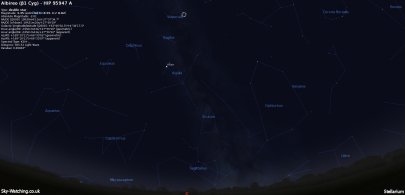
We have imaged this fantastic dual colour double star only once before, something we’re hoping to rectify with some nice stacked images sometime over the next month or so!

Friday 12th July – This is the time of year to be looking for noctilucent clouds, which sometimes appear low down in the northwest (after sunset) and northeast (just before sunrise)
These clouds are in the upper atmosphere and are usually too faint to see, becoming visible only when illuminated by sunlight from below the horizon while the lower layers of the atmosphere are in the Earth’s shadow
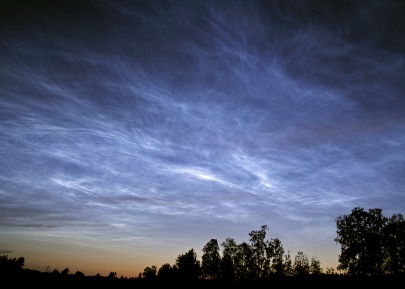
Tuesday 16th July – This morning the Moon is seen at First Quarter phase
Saturday 20th July – On this historic date 44 years ago, Apollo 11 astronauts Neil Armstrong and Buzz Aldrin became the first humans to land on the Moon, setting foot on the surface a short while later on 21st July at 02:56 UTC
The location of “Tranquilty Base” is approximately shown in our image below
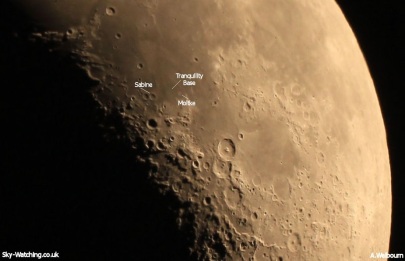
Sunday 21st July – The Moon is at Perigee today at a distance of 358,400 km (222,699 miles), the closest point of its orbit to the Earth
Monday 22nd July – Before sunrise planets Mars and Jupiter will appear next to each other in the north eastern sky
They’ll be close neighbours over the next few mornings and are a good target for cameras and telescopes!
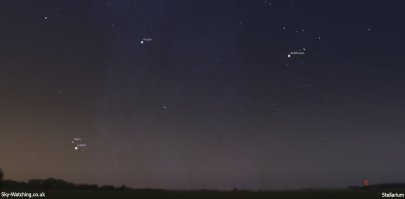
And the Full Moon this evening is also sometimes known as the Summer Moon, Mead Moon or Rose Moon
Monday 29th July – The Moon appears at Last Quarter phase this evening, and the Southern Delta Aquarid meteor shower peaks this evening. With the radiant low to the south it will reduce the number of meteors we may see from the expected ZHR of 20 per hour, but as always with meteor showers well worth a look!
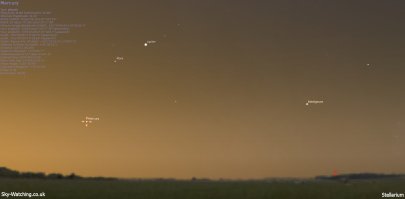
Tuesday 30th July – Mercury has moved greatly in the sky this month and is now seen at Greatest Western Elongation, meaning it appears before sunrise, this morning following first Jupiter and then Mars up over the eastern horizon (see above)
Planets visible this month:
Jupiter
Saturn
Venus
Mercury
Neptune
Uranus
Mars
Remember, it can take your eyes up to 20 minutes to become properly dark adapted, and anything up to an hour for a telescope to reach ambient temperature outside (to ensure the best image), so give yourself plenty of time to get set up!
To make it easier to find this list of astronomical happenings you can also locate it in the “Monthly Guide” section in the menu bar to the right. Handy! 🙂
Guide images created with Stellarium
Archive:
Astronomy Events – June 2013
Astronomy Events – May 2013
Astronomy Events – April 2013
Reblogged this on MissBlue Blog.gr.
LikeLike
Great info, thank you!
LikeLike
Just found the blog, love it!
LikeLike